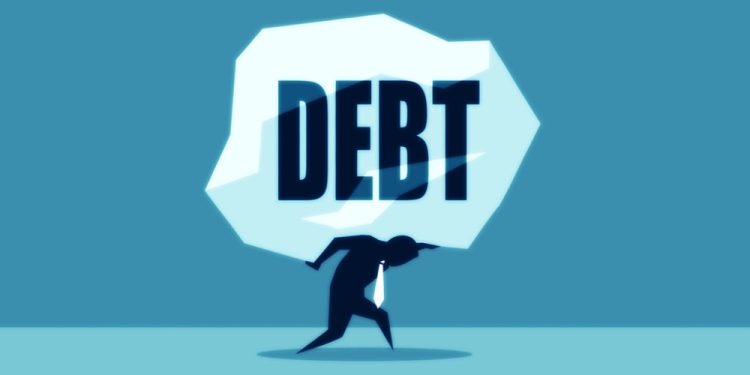(Schiff)—Global debt rose $10 trillion to a record $397 trillion in the first half of 2023, according to the Institute of International Finance (IIF).
The big increase in debt occurred despite tightening credit conditions, and it is an increasingly worrisome problem because the “free lunch” of artificially low interest rates is over.
Over the last decade, global debt has increased by a staggering $100 trillion.
Combined government, household and corporate debt hit 336% of global GDP in the second quarter of this year. The global debt-to-GDP ratio has increased by 2 percentage points this year. Prior to 2023, the global debt-to-GDP ratio had declined seven straight quarters after reaching a record of 360% at the height of the global pandemic government lockdowns.
About 80% of the new global debt was piled up by developed nations, with Japan, the US, Britain and France leading the way. Among emerging markets, the largest economies saw the biggest debt increases, including China, Brazil and India.
“As higher rates and higher debt levels push government interest expenses higher, domestic debt strains are set to increase,” the IIF said in a statement.
Peter Praet served as chief economist at the European Central Bank. He told Reuters that the debt levels are still sustainable, but the outlook is worrying given the fact that spending needs aren’t going to decline.
You can take many, many countries today, and you will see that we are not far away from a public finances crisis.”
Praet seems over-optimistic.
The US government is over $33 trillion in debt. In fact, the Biden administration managed to add half a trillion dollars to the debt in just 20 days. Meanwhile, with rising interest rates, the federal government is now spending as much to make interest payments on the debt as it is for national defense.
And there is no end to the borrowing and spending in sight.
More than a decade of interest rates pushed artificially low by central banks worldwide incentivized a tidal wave of borrowing. This was intentional. The thinking was that borrowing and spending would “stimulate” a global economy dragged down first by the Great Recession and then by government-instituted pandemic policies. Nobody ever stopped to think the easy-money gravy train might run out of track.
But as Fitch Ratings managing director Edward Parker put it, “That free lunch is over and interest payments are now rising faster than debt or revenue.”
The US economy in particular was built on borrowing and spending. Easy money is its lifeblood. It simply can’t run without artificially low interest rates. The global economy is in much the same boat.
That puts the Federal Reserve and other central banks between a rock and a hard place. They need to keep interest rates high to counteract the trillions of dollars they created and injected into the global economy as stimulus causing a rapid increase in price inflation. But these higher rates will ultimately break things in the borrow-and-spend economy.
What Would You Do If Pharmacies Couldn’t Provide You With Crucial Medications or Antibiotics?
The medication supply chain from China and India is more fragile than ever since Covid. The US is not equipped to handle our pharmaceutical needs. We’ve already seen shortages with antibiotics and other medications in recent months and pharmaceutical challenges are becoming more frequent today.
Our partners at Jase Medical offer a simple solution for Americans to be prepared in case things go south. Their “Jase Case” gives Americans emergency antibiotics they can store away while their “Jase Daily” offers a wide array of prescription drugs to treat the ailments most common to Americans.
They do this through a process that embraces medical freedom. Their secure online form allows board-certified physicians to prescribe the needed drugs. They are then delivered directly to the customer from their pharmacy network. The physicians are available to answer treatment related questions.




